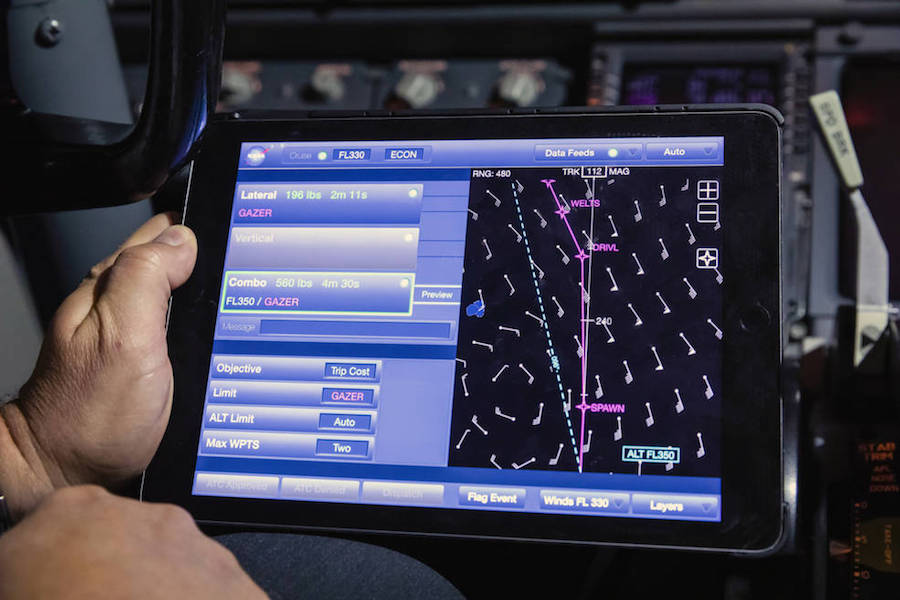
NASA’s Traffic Aware Strategic Aircrew Requests (TASAR) and Traffic Aware Planner (TAP) technology. Photo: NASA
A new partnership will see real-time aircraft data analytics provider APiJET bring the type of route optimization available to drivers via the popular Waze smartphone application to Alaska Airline pilots.
The new route optimization capability will become a reality when APiJET integrates NASA’s Traffic Aware Strategic Aircrew Requests (TASAR) and Traffic Aware Planner (TAP) technology into its own open architecture data platform. NASA first developed TASAR as a cockpit automation software capable of simultaneously monitoring real-time weather, winds, air traffic and restricted airspace to provide re-route recommendations to pilots every 60 seconds.
Alaska and NASA started flight testing the software in 2018, and will continue flight tests through September 2020.
“A fusion of applications will occur with a TASAR technology product becoming part of the current APiJET product lineup,” TJ Horsager, vice president of sales and business development at APiJET told Avionics International.
“Initially, we will provide continued support for the TASAR trial, including ground-based data feeds and performance analysis activities. This will allow Alaska to continue evaluating and collecting valuable data about TASAR operations and associated savings,” he added.
TAP is capable of monitoring changes in headwinds, and also couples navigation data pulled from onboard systems with real-time information generated by the Gogo in-flight connectivity featured across Alaska’s fleet. The data is analyzed, and the system then scans the broadcasts of local air traffic centers for potential conflicts before providing suggestions for a more efficient route—similar to how the Waze app constantly scans road conditions to provide drivers with the most optimal path to their destination.

APiJET will develop the EFB-based TASAR technology for use on Alaska’s Boeing 737 pilots’ EFBs. Photo: Alaska Airlines
The TASAR capabilities will be gradually integrated into APiJET’s new smart aircraft data services, analytics and applications that made its debut on Icelandair’s 757 fleet last year. APiJET’s system uses intelligent modules to send specific onboard aircraft data and alerts about system or component status to the applications and analytics dashboards that airlines use to monitor flights. This creates a configuration loop through internet connectivity links between the air and the ground.
Among APiJET’s smart aircraft data services are an aircraft data dashboard that can stream data from any available data bus, run on any onboard hardware server, generate data in multiple formats and send data over any available internet protocol link.
“APiJET’s focus for full fleet deployment is on providing an integrated TASAR software solution to Alaska, including software components which operate on the pilot’s EFB, airborne hardware and applicable ground systems. No immediate changes are envisioned for Alaska’s IT/back end systems,” said Horsager.